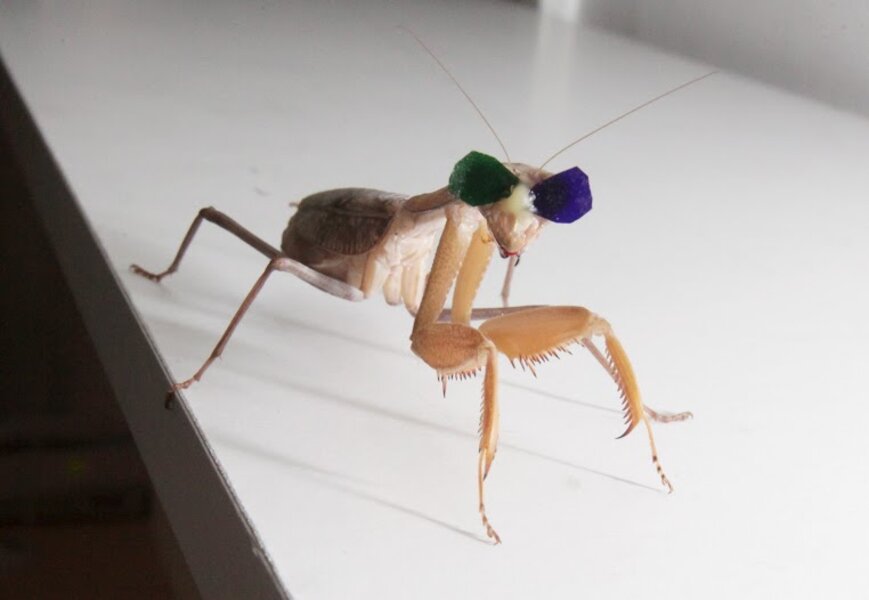Insect cinema? Why scientists make little 3D glasses for praying mantises
Loading...
How do you take the next steps in robot vision? Take a praying mantis to the movies.
This week a new article in Scientific Reports by a Newcastle University research team confirms that the praying mantis, despite its tiny brain, relies on 3D vision, or stereopsis. Study leader Jenny Read said, "despite their minute brains, mantises are sophisticated visual hunters which can capture prey with terrifying efficiency. We can learn a lot by studying how they perceive the world."
Old-fashioned 3D glasses designed for people rely on red and blue lenses, but because red light is poorly visible to mantises, researchers used blue and green lenses, Ghaith Tarawneh, a research associate on the Newcastle team, explains in an interview.
“Then we place the mantis in like a cinema [a platform in front of a computer screen] where they look at these images that are flat, but with the glasses the mantis sees them in 3D and are striking at the screen,” says Dr. Tarawneh. “So we fooled mantis into thinking there is a bug close to them when it is really far away on the screen. If it strikes we know it perceives this thing to be close to it.”
To conduct the study, researchers constructed a specially-designed “insect cinema,” complete with itty-bitty 3D glasses, attached with beeswax.
“You would not want to use glue on an insect,” says Tarawneh. “My colleague, [Dr. Vivek Nityananda] crafts these 3D cinema glasses and then attaches them to mantis head using beeswax. It allows the glasses to be easily removed and to make them comfy.”
How is this useful for robotics?
Building more capable autonomous robots is a goal for many companies and industries around the world, from service bots taking over jobs too dangerous for humans to perform, to Nadine the social android robot. Robots' ability to quickly see where they're going is key.
“Well, 3D vision has loads of applications, like robot navigation,” Tarawneh explains. “Robots rely on getting information from the environments. You want the robot to understand somehow its environment and perhaps move towards particular goals and it needs some sort of understanding of the environment based on visual input.”
The confirmation that mantises are able to make sophisticated depth calculations with their relatively tiny brains could lead to better algorithms for 3D depth perception in computers with further research.
“Of course all of this data and observations is to understand how their brains work – and then how our own brains work – and then map this technology for robotics. The mantis like it and we, of course, as scientists like it because it helps us understand what’s going on,” Tarawneh says.








